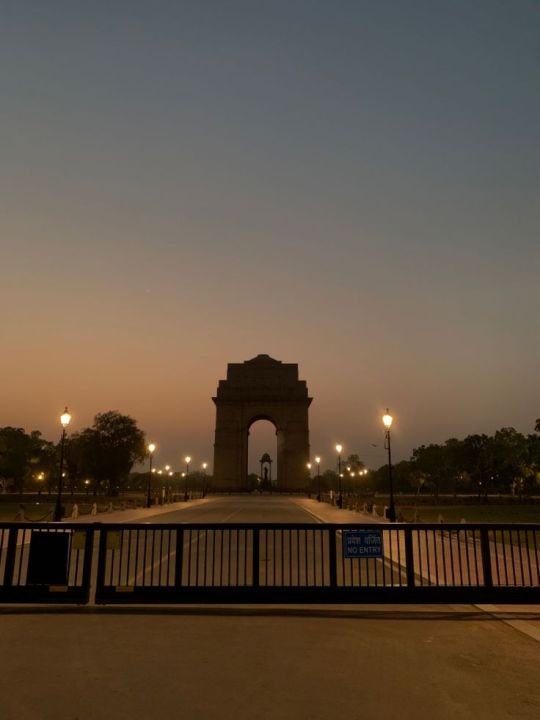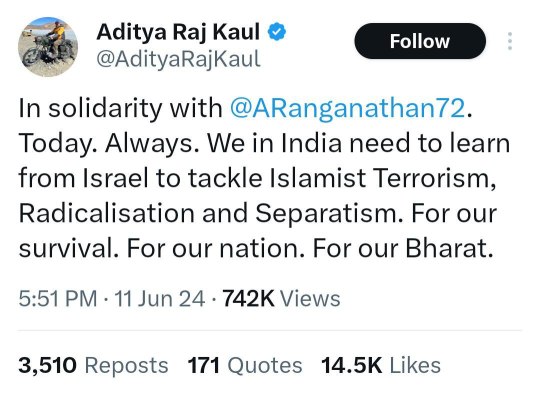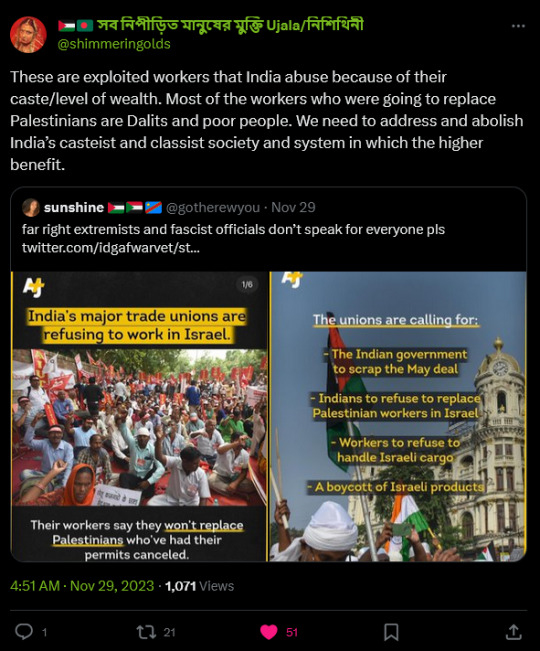#India's capital
Text
Delhi Tour Guide Harry
#Delhi#Tour guide#Secrets#India's capital#Hidden gems#Unveiling#Exploration#Cultural heritage#Historical sites#Local insights#Insider knowledge#Must-visit places#Sightseeing#Heritage walks#Landmarks#City exploration#Monuments#Architectural wonders#Cultural experiences#Authentic cuisine
1 note
·
View note
Text

#indian#leftism#anti capitalism#socialism#communism#anarchy#mumbai#india tourism#india#punjab#karnataka#terfsafe#terfblr#terfism#twitter post#radical feminism#gender critical#radblr#jk rowling#terfsruntumblr#radical feminists do touch#radical feminist safe#radical feminists do interact#radical feminist community
635 notes
·
View notes
Text
Indian tea production has been in severe crisis since the mid nineties largely due to neo-liberal structural adjustments in the Indian economy. The size of the tea industry, which is second only to China and accounts for 25 percent of global tea production, has made this a huge blow to the country’s agrarian economy. The industry employs 1.26 million people on tea plantations and two million additional people indirectly. As such, the economic crisis has had an enormous impact on the lives of local residents. In Kerala where I have been conducting research, there have been eight cases of suicide and twelve deaths due to starvation on tea plantations since 2001. Along with utter poverty and famine, tea plantation workers have faced increasingly unhygienic work environments, shattered social life/community relations, and withdrawal of the welfare measures previously enjoyed.
The crisis punctured the isolated environments of the plantations and precipitated neoliberal reforms that closed down production in many areas either partially or completely. While many families remained on the plantations, large numbers of workers who had lived there for more than five generations were now compelled to seek work outside. Some went with their families to either their ancestral villages or regional industrial townships such as Coimbatore and Tirupur in Tamil Nadu.
These plantation workers have now joined the ranks of the massive Dalit workforce powering India’s unorganised and informal sectors. In joining that pool of workers, Tamil Dalit labourers are exposed to aspects of a caste-ridden society from which they had previously been shielded. The situation of Saraswathi, a female retired worker in her early sixties, illustrates the dilemma and struggles of the workers who moved out the plantations.
— The hidden injuries of caste: south Indian tea workers and economic crisis by Jayaseelan Raj
#plantation tamils#kerala tea plantation#kerala#idukki#neocolonial india#neoliberalism#neoliberal india#plantation capitalism#plantation neoliberalism#tamil dalit workers#neoliberal casteism#jayseelan raj#tamil nadu#tamil labour migration
177 notes
·
View notes
Text
May: apple vodka
June: GAY apple vodka
Stop making our lived experiences about your product marketing. There’s more you can do.
#pride month#pride month 2023#rainbow washing#rainbow capitalism#pink washing#pink capitalism#queer content#creator#content creator#lgbtqia#lgbt#lgbt India#india lgbt#pride#gay pride#lesbian pride#WLW pride#bisexual pride#trans pride#queer pride
982 notes
·
View notes
Text
I see a lot of indian liberals chide the ambanis for spending way too much money on their son's wedding and instead prop up ratan tata as a "good" billionaire, when his wealth was built on adivasi brutalisation.
#imagine the thinking problem solely lies with ambani when really it's capitalism and billionaires RATAN TATA IS NOT AN “ETHICAL BILLIONAIRE”#india#capitalism#ਰੇਵਾ
56 notes
·
View notes
Text
Dilwalon ki hai ji...🫶🩷
Delhi dilwalon ki 🫶🌸









#desi core#desi aesthetic#desiblr#desi tumblr#desi tag#indian aesthetic#indian tumblr#delhi#new delhi#purani delhi#old delhi#delhi aesthetic#moodboard#dilwalon ki delhi#capital of india
39 notes
·
View notes
Text

Then there are these perverts. Some hindutvadi was talking about applying the 'Israeli' model to Kashmir.
#Then there are these perverts. Some hindutvadi was talking about applying the 'Israeli' model to Kashmir.#hindutva#american indian#indian#india love#india westbrooks#travel agency in india#india#israel#israhell#kashmir#nazisploitation#nazis#nazigate#nazi#neonazis#neofascism#class war#ausgov#politas#auspol#tasgov#taspol#australia#fuck neoliberals#neoliberal capitalism#anthony albanese#albanese government#zionistterror#zionazis
21 notes
·
View notes
Text

I love my friends
#anti capitalism#politics#indian elections 2024#india election 2024#eat the rich#fuck capitalism#liberty#wealthy privilege#late stage capitalism#minimum wage#bartending#bartender#prime minister#prime minister of india#me for next prime minister
22 notes
·
View notes
Text


Histories of colonisation ought to be remembered, including the horrors and atrocities, but also the endurance and empowerment found in trenchant resistance and the fight for sovereignty, writes Radhika Reddy.
India and Aotearoa are both grappling with decolonisation. In this ongoing struggle to wrest free from the legacies of colonialism, each society can learn from the other.
A recent piece published by The Spinoff uncovered some of these lessons, but in my view gave a rather disempowering view of both Māori and Indian experiences. It emphasised tragedy, brutality and suffering, but overlooked trenchant resistance efforts seeking sovereignty, where we might find the most useful stories to exchange.
Common ground
The previous article began with common ground, but only focused on Māori and Hindu ecological values, so let’s broaden the picture with some Indian traditions beyond Hinduism, and decolonising Māori values.
Papatūānuku and Kaitiakitanga: Khalifa, Amana (from Islam)
An “ethos of living in harmony in nature” is found in Islam, India’s second-largest religion. The Quranic approach is based on Khalifa and Amana (trusteeship of nature) in which humans have guardianship over nature, to appreciate and care for it, pass it unspoiled to future generations, and manage sustainably.
Manaakitanga: Seva (from Sikhism)
A spirit of hospitality pointedly appears in the centuries-old Sikh tradition of Guru Ka Langar (communal meal), an act of Seva (selfless service). Langar serves food freely and equally to all-comers, regardless of religion, caste, wealth, gender or age, overcoming divisions exploited by colonialism.
Tino rangatiratanga: Swaraj (from secularism)
Māori notions of self-government and Gandhi’s credo of Swaraj (self-rule) share an essence of seeking self-determination, with social structures and values separate from colonial interference.
Besides principles, there are common experiences and episodes of resistance shared in history:
Parihaka
The events of Parihaka came long before India’s independence movement gained momentum, but the spirit of non-violent resistance echoes across centuries, possibly having influenced Gandhi.
Redcoats
British regiments frequently rotated through India and New Zealand. Waves of veterans, after plundering India or suppressing its rebellions, came to fight the New Zealand Wars, or left to police India. British statues as well as town, street and suburb names across Aotearoa are familiar to students of Indian history — Empress Victoria, Governor-General Auckland, Colonel then Commander-in-Chief Wellesley (later Duke of Wellington), and places like Bombay or Khyber Pass. These are connected histories.
Lessons India has to offer for Māori
Among decolonisation projects, India’s imperfect story of independence still has interesting lessons.
Non-violent resistance works
Māori have led non-violent resistance in Aotearoa for generations, from Parihaka to Ihumātao, and may find the example of India’s liberation a hopeful landmark victory in global history.
The practice of Indian non-violent resistance continues to this day, as protests rage against likely unconstitutional policies such as the Citizenship Amendment Act and the National Register of Citizens, with assemblies, marches, sit-ins, and art, despite state violence.
Coexistence
Although India ejected British occupation and suffers internal divisions, there is still a firm thread running through the ages demonstrating coexistence between different cultures.
Look to chapters in history like the peaceful inclusion of Muslims in South India since the seventh century, the religious tolerance of Akbar in the 16th century, the joint Hindu-Muslim Indian Rebellion of 1857, and the secular Indian constitution. They contrast with divisive ideologies like Hindutva founder V.D Savarkar’s two-nation theory that promoted a dominant Hindu nation. The daily lives of many Indians today embody inter-cultural acceptance, the norm across much of the country, most of the time.
Whereas Aotearoa may not return its settler society for a full refund, multicultural coexistence is possible.
Overcoming divide-and-rule
Whether it was the East India Companies or the British Raj, a small minority of power brokers ran the show — infamously, 35 staff in an East India Company office. They relied on divide-and-rule, recruiting vast numbers of Indian foot soldiers (Sepoys) to do the hard work. But a highly-leveraged organisational arrangement is weak to united resistance (like Kotahitanga). Today it appears in gig economies or the criminal justice industry, which pit marginalised people against each other.
Self-government is not always good government
Today’s India shows how things can get wobbly even 70 years after independence, as a homegrown blood-and-soil movement undermines equality and reproduces colonial hierarchies atop a diverse society.
Take the word “decolonisation”. It probably looks straightforward, but it is a co-opted term in India. In the name of decolonisation, the Hindutva movement promotes discriminatory reforms, such as ending affirmative action for lower-caste people, and passing the exclusionary Citizenship Amendment Act.
There are regions under Indian rule seeking greater autonomy or Azaadi (freedom) today – resisting occupation by a central Indian state, as Assam endures detention centres, and Kashmir a militarised siege.
It takes eternal vigilance to protect hard-won sovereignty from sabotage.
What India can learn from Māori
Colonialism is now
It is tempting to think colonialism must belong only to museums and history books. But settler-colonial societies still persist. In Aotearoa, settlers may have settled but the nation remains unsettled. As Treaty negotiations, claims and protests unfold, Indians can reflect on how the colonial legacy is fed by continuous re-colonisation – a risk India is prone to, not from Britain, but from, say, supremacists within.
Indians in Aotearoa can also respond by allying with Māori in decolonisation efforts.
Overcoming casteism and anti-indigeneity
While there is no comparing two complex societies, there are still parallels between the institutional discrimination that Māori have endured, and the discrimination against Dalit, Other Backward Class, Scheduled Caste, Scheduled Tribe and Adivasi (indigenous) people. As Indians in Aotearoa can find solidarity with Māori in undoing colonial oppression, so too can India find equality for its systematically disadvantaged classes.
Protecting taonga like language
While India is blessed with a diversity of cultures, a tendency to homogenise society with one language and identity sometimes rears its head. Whether under well-meaning secularism, or Hindutva rule, language imposition threatens diversity. South Indian languages like Tamil, Telugu, Malayalam and Kannada are spoken by large minorities but are often in tension with a Hindi regime pushed by central governments. The experience of Te Reo Māori shows the value in preserving languages, and the perils of erasure.
Common struggles
Supremacism
Whether it is white supremacy or Hindu supremacy (sharing traits like Islamophobia), countering dangerous ideologies is vital to fulfill the egalitarian promise of the constitutions of both Aotearoa and India.
Climate change
A global challenge like climate change demands a variety of solutions, but most importantly by centering indigenous people in decision-making — something Aotearoa has yet to fully embrace. For all the “harmony with nature” embedded in dominant Indian cultures such as Hinduism, the ruling BJP government has much to answer for when it comes to emissions, environmental degradation and deregulation.
Feminism, LGBT and disability equality
Achieving equality for women, non-binary, LGBT and disabled people in India and Aotearoa is an ongoing struggle. Threats like sexual abuse, domestic violence, inadequate healthcare, colourism, repressive gender roles, limited autonomy, inaccessiblity, and economic inequality, are common concerns.
Patriarchal British norms echo in Indian laws, as with Section 377 that criminalised homosexuality until recently. Despite decriminalisation in 2018, there is not yet recognition of same-sex or gender-diverse marriage, protection against discrimination, or adequate healthcare. Trans Indians are targeted by the new Transgender Persons Act which sanctions second-class treatment — for instance, it provides for lower sentences in cases of violent crimes against trans women. The new Citizenship Amendment Act and National Register of Citizens especially threaten women, non-binary, LGBT and disabled people.
In Aotearoa, amendments to laws like the Birth, Deaths, Marriages, and Relationships Registration Bill, letting trans people more easily update birth certificates, still face transphobic opposition. Abortion decriminalisation remains under consideration. Māori may be worst affected by settler-colonial sexism, homophobia, transphobia and ableism.
These are signs that our societies have a long way to go, to enact systemic reforms, and to lift the veil of everyday shame and silence surrounding marginalised lives in our cultures.
Remembering
Histories of colonisation ought to be remembered, including the horrors and atrocities, but also the endurance and empowerment found in resistance. The previous Spinoff article proposed a museum dedicated to New Zealand colonisation, and praised changes to the curriculum teaching New Zealand history in all schools.
Both of these are laudable goals, but must be conducted with care to avoid the kind of revisionism seen in India under Hindutva rule. Any museum of New Zealand colonisation should seek to share with all New Zealanders the narratives Māori have learned and developed, to centre Māori self-determination and agency, and to emphasise coexistence under a Treaty framework that respects Tino Rangatiratanga.
#india#desiblr#desi#aotearoa#maori#te reo#te reo māori#decolonization#community building#practical anarchy#practical anarchism#anarchist society#practical#revolution#anarchism#daily posts#communism#anti capitalist#anti capitalism#late stage capitalism#organization#grassroots#grass roots#anarchists#libraries#leftism#social issues#economy#economics#climate change
18 notes
·
View notes
Text
Across only 5 countries, 55 million people faced severe and deadly hunger last year, due to the climate crisis.
#climate crisis#changement climatique#climate news#climate#climate change#pollution#sustainability#environment#bangladesh#somalia#kenya#ethiopia#pakistan#china#malaysia#philippines#brazil#brasil#india#class#class war#class warfare#eat the rich#eat the fucking rich#kill the rich#inequality#capitalism#environmental issues#refugees#refugee
13 notes
·
View notes
Text

#Major me & who#desiblr#desi girl#india news#indian#anti capitalism#bjp#congress#nitishkumar#smriti irani#india elections#indian elections#elections#tv news#desi tumblr
12 notes
·
View notes
Text

#support palestine#leftism#socialism#communism#anti capitalism#anarchy#ceasefire#current events#genocide#israel palestine conflict#israel politics#palestine#dalit#india#hinduism#vedas#sanatandharma#hindublr#hindu mythology#hindu calendar#hindustan#casteism#tweet#desi tumblr#desiblr
609 notes
·
View notes
Text
#tiktok#India#billionaire#billionaires#capitalism#capitalism kills#capitalism is evil#late stage capitalism#anti capitalism#wealth inequality#tw flashing#flash warning#flashing lights
10 notes
·
View notes
Text


This Saturday begins our Culture Circles!! Join us to learn more about different marginalized communities, their customs, their music, their languages, EVERYTHING! And learn how you can support them on their journey to liberation! discord link in bio @bfpnola since tumblr kills links!
—
Other time zones [clock emoji next to each]:
Saturday, Sept. 23rd
⏰ 5 pm MT — Phoenix, Arizona, USA
—
Sunday, Sept. 24th
⏰ 12 am BST — London, United Kingdom
⏰ 4:30 am IST — Mumbai, India
⏰ 8 am JST — Tokyo, Japan
⏰ 9 am AEST — Sydney, Australia
#reaux speaks#resources#bipoc#undescribed#anti capitalism#queer#history#intersectional feminism#tamizh#india#language#linguistics#sami people#norway#norse#south korea#korean#culture#music#art#dance#discord server
31 notes
·
View notes
Text
7 notes
·
View notes
Text
MRA shit exists for the same reason that feminism exists. The heterosexual couple are not happy with their arrangement yet enforce it on others as some kind of sacred truth. They are masochists who want to see their pain projected at every corner. It may seem that feminism is the more "righteous" one but the truth is neither movement serves the sovereign individual and given that the prerequisite of believing in MRA/feminism is believing in the existence of "males" - whether its males needing release from "toxic expectations", or females needing release from males who are "oppressing" them, these movements cannot be valuable to those who believe there is only ONE sex - females and mutated females. Every part of male biology is a mutated part of female biology. There is nothing offensive in stating this, this is the best-kept occult secret in history and it needs to be stated. In both the MRA scenario and the feminist scenario, the pain is self-afflicted and continues via the original sin/sexual reproduction. Females choose to depend on males and birth them and males choose to wear their mask of constant toughness and live a lie. Both parties could choose to be free but both love pain because they are as soulless as could be and recruit their children into their soul-crushing world order, hence why the cycle never breaks. Everybody loves pain and no one cares to know or do any better.
#currently in India and thinking about this#the physical distance between rich and poor is tiny#the rich dont truly value knowledge either they just learned to capitalize on select bits of it to pursue a rigid occupation#the rich and poor both lead double lives#especially when it comes to sexuality#and they use their children as an investment#so much for childfree people being selfish lol
67 notes
·
View notes